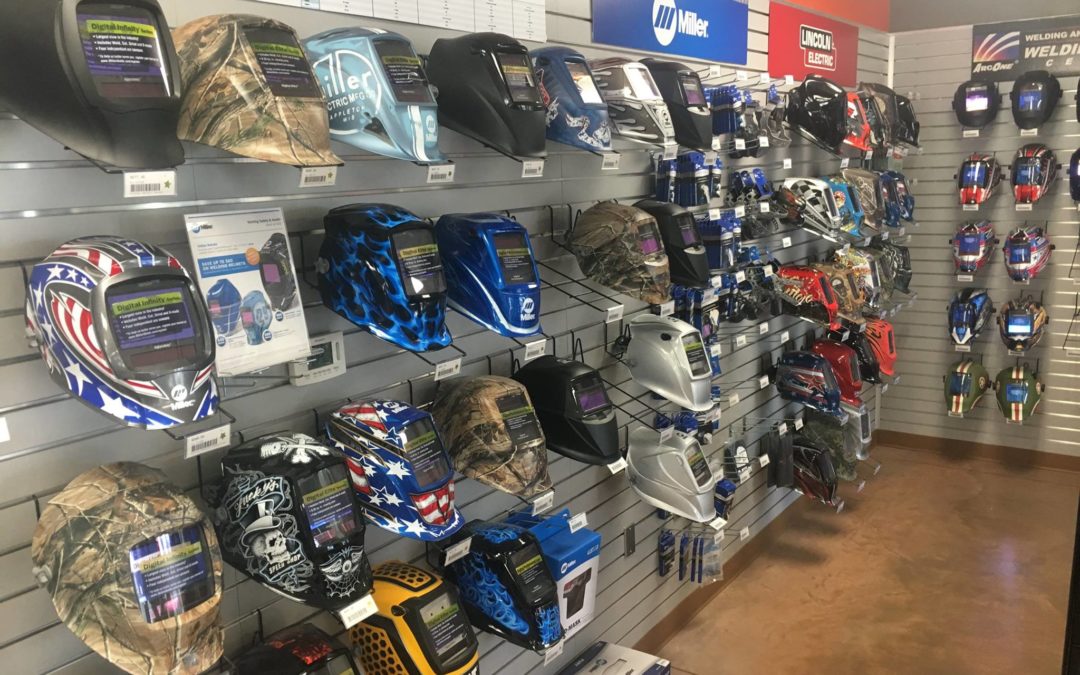Deciding between a passive helmet vs. an auto darkening helmet?
Passive welding hoods use a dark tinted lens of shades 9-14 based on level of protection needed, 10 being the most common. They usually are less expensive but require a learned skill to flip down at just the right time to strike an arc. For a novice welder this can be difficult and lead to poor starts and even result in an arc flash injury .Tack welding will become a pain and time consuming with the constant lifting of the hood.
Auto darkening welding hoods in their light state are usually a shade of #3 and easily seen through. When you strike an arc, sensors detect the ultraviolet light and the lens darkens. No more raising and lowering the hood to see! Easy for beginners and experts!
Auto darkening hood options to consider.
• Fixed shade or Variable shade. Fixed shade are set to one darkness typically shade #10. Variable shades typically allow you to adjust from shade 9-13.
• Viewing size. Area that the weld is visible. Typically 6 sq. in. to 9 sq. in. viewing.
• Number of sensors. More is better but cost goes up. The more sensors available the less chance of them being obstructed when welding in a tight space so if one sensor is blocked the hood will still change to dark.
• Adjustable sensitivity. How much brightness will trigger the lens. Useful if used outdoors or other bright light situations.
• Weight. When welding 8 to 12 hours a light weight helmet can reduce neck pain and fatigue.
• Headgear comfort. Manufactures have designed different headgear styles to provide better fitting helmets which adds to the comfort when welding long hours.
Everyone is different! Stop in our showroom to see a wide range of brands and styles. Our knowledgeable staff can assist you in finding the hood that will best fit your needs and budget.



